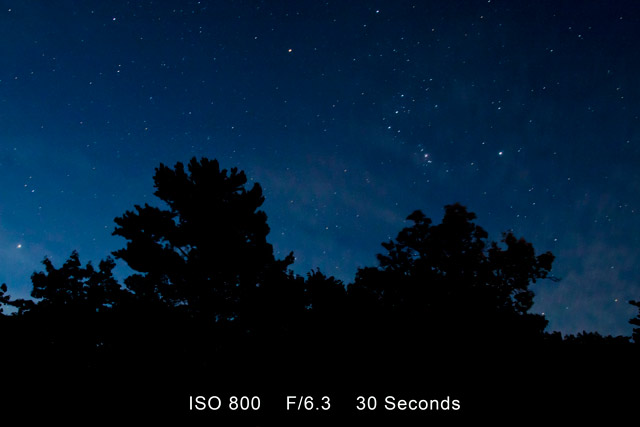Light is the Enemy
When going out to shoot the night sky it is imperative that you get far away from any ambient light. City lights and even a few lights around your neighborhood can interfere significantly with your attempts to get good photos. City lights can carry for 10 or 20 miles. Next time you are traveling at night see how far away you can see the glow of a city on the horizon. The moon is also a factor. Unless you want to try to get some pictures of the moon it is best to choose times when the moon is just a sliver, or not visible at all. The darker the better. In addition the sky needs to be clear. Clouds or any fog at all will destroy your chances for great night sky pictures. Be patient and wait for the right night. Otherwise you will be wasting your time and losing sleep for nothing.
Exposure Options
The sky is moving! Or more truthfully the Earth is moving. A shutter speed of as little as ten seconds can show visible star trails. Some people love the look of the stars streaking through their images, and others want only bright stationary stars. A rule of thumb is the further away from the north star you focus the relative speed of the stars increases. If you focus right on the North star the speed is slower. Where is this North star?

Like all other night photography experimentation is the key, but if you look at the accompanying images they will give you a place to start. There are some excellent sites on the web ( I put some in the links ) that show what can be done with practice. For now just go try it and get your first good night sky shot.

Though difficult to see the stars in this photo show no trails at all and the line of trees make a interesting silhouette.

With light just starting to creep into the sky a long exposure creates a vivid blue background for the trees.

A little help from a flashlight adds interest to the foreground by lighting the tree on the right.

A clear sky and as little ambient light as possible are key to shooting the stars at night.
